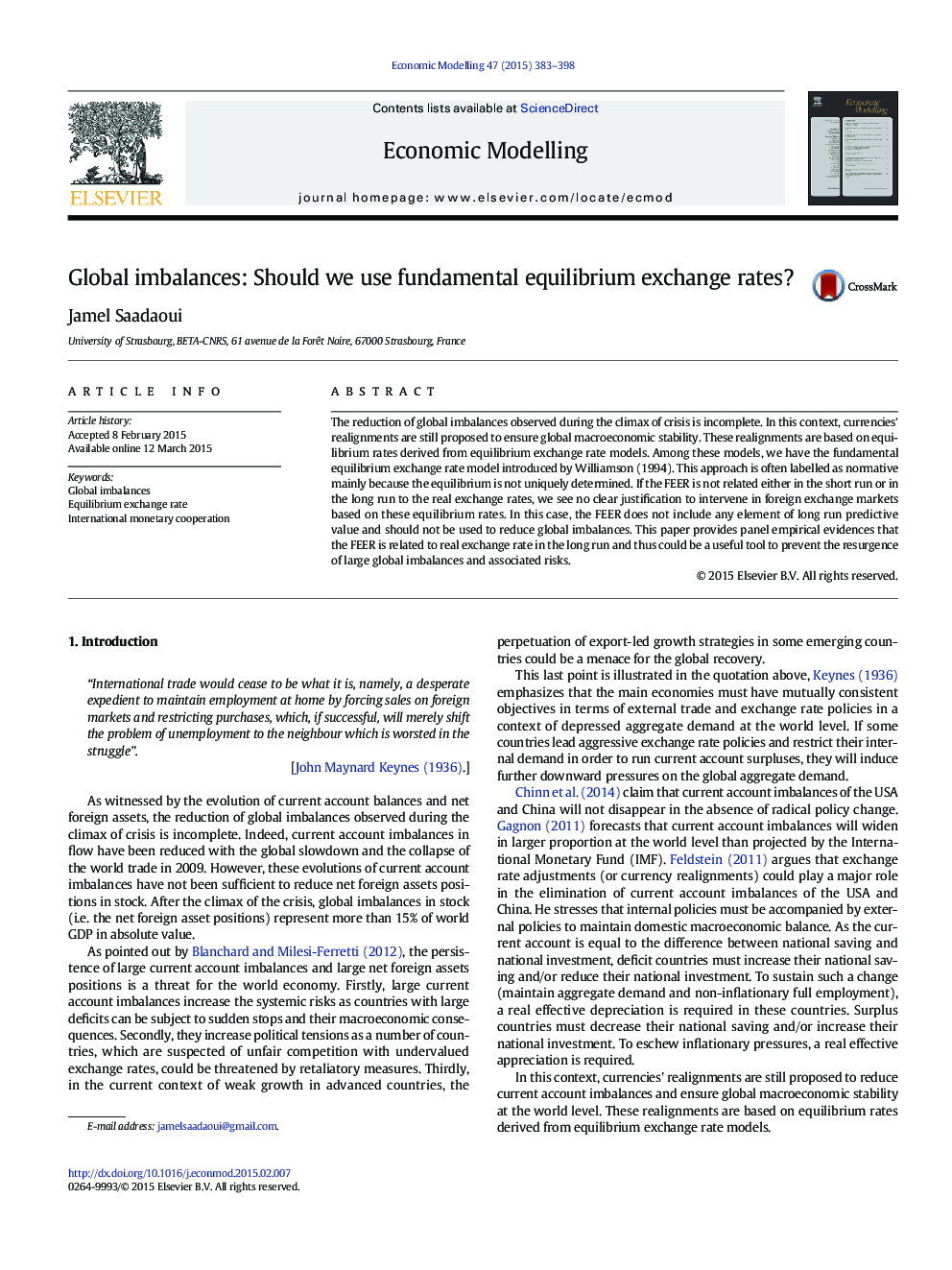| کد مقاله | کد نشریه | سال انتشار | مقاله انگلیسی | نسخه تمام متن |
|---|---|---|---|---|
| 5053930 | 1476521 | 2015 | 16 صفحه PDF | دانلود رایگان |
- I test empirically the usefulness of FEERs to correct misalignments.
- For a panel of industrialized and emerging countries over the period 1982 to 2010
- In a non-stationary panel with heterogeneous slopes and cross-sectional dependence
- There is a positive bidirectional causality between FEERs and REERs.
- Confirming FEERs as worthwhile instruments to reduce global imbalances
The reduction of global imbalances observed during the climax of crisis is incomplete. In this context, currencies' realignments are still proposed to ensure global macroeconomic stability. These realignments are based on equilibrium rates derived from equilibrium exchange rate models. Among these models, we have the fundamental equilibrium exchange rate model introduced by Williamson (1994). This approach is often labelled as normative mainly because the equilibrium is not uniquely determined. If the FEER is not related either in the short run or in the long run to the real exchange rates, we see no clear justification to intervene in foreign exchange markets based on these equilibrium rates. In this case, the FEER does not include any element of long run predictive value and should not be used to reduce global imbalances. This paper provides panel empirical evidences that the FEER is related to real exchange rate in the long run and thus could be a useful tool to prevent the resurgence of large global imbalances and associated risks.
Journal: Economic Modelling - Volume 47, June 2015, Pages 383-398
